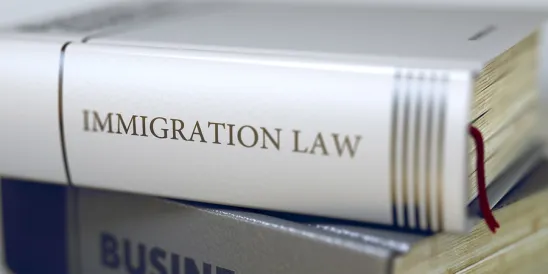A recent announcement by U.S. Immigration and Customs Enforcement (ICE) shows that the agency is making good on its promise to quadruple the number of worksite inspections it conducts. Data released by ICE shows that between October 1, 2017, and July 20, 2018, its Homeland Security Investigations (HSI) unit opened 6,093 worksite investigations—a number three and a half times greater than the total investigations opened the year before. With more than two months to go before the end of fiscal year 2018, ICE seems well-positioned to meet its goal.
ICE’s announcement also highlights a recent operation during which HSI served more than 5,200 notices of inspection (NOI) on employers around the country, compelling them to produce their Forms I-9 and related documentation for audit by ICE. The operation was conducted in two phases, the latest of which took place between July 16 and July 20, 2018. During that five-day period, HSI served more than 2,700 NOIs and arrested 32 people, suggesting that ICE continues to ramp up its enforcement efforts.
According to Derek N. Benner, acting executive associate director for HSI, the recent uptick in I-9 audits is motivated not only by HSI’s mandate to ensure adherence to federal law, but also by the goal of creating a “culture of compliance” among employers. “Employers need to understand that the integrity of their employment records is just as important to the federal government as the integrity of their tax files and banking records. All industries, regardless of size, location and type are expected to comply with the law,” he said.
In light of the substantial increase in the number of NOIs being served on employers nationwide, here are some answers to a few frequently asked questions about the audit process.
1. Who can ICE audit?
Any business can be the subject of an I-9 audit.
2. How does an employer know if it is being audited?
An employer will receive an NOI requesting certain documents and possibly a personal appearance by a company representative. ICE must provide employers with at least three days to produce the documentation (unless a warrant or court order is obtained, typically as a part of a criminal investigation that requires document production in less time).
3. What is the potential liability?
Audits may result in employer fines of $216 to $2,191 per I-9 for improper completion of I-9 forms (e.g., failure to timely complete Sections 1 or 2, failure of the employer to sign Section 2, or employer acceptance of improper documents). Employers that are found to have knowingly hired or to have continued to have employed unauthorized workers may be subject to monetary penalties reaching up to $16,000 per count and criminal exposure. ICE takes a five-factor approach when considering what penalties to levy on an employer: (1) the employer’s size; (2) the gravity of the violation; (3) the involvement of unauthorized worker(s), if any; (4) the employer’s prior violations, if any; and (5) the sincerity of the employer’s compliance efforts.
4. What about criminal sanctions?
The U.S. Department of Justice may become involved to initiate criminal proceedings (e.g., for encouraging or inducing undocumented workers to remain in the country unlawfully, for assisting with securing fraudulent documents, or for a variety of other violations).
5. What types of notices should an employer expect during the audit?
During an inspection, ICE may inform an employer of important developments via several types of notices:
- Notice of Suspect Documents: This notice serves to inform the employer that ICE has reason to believe that an employee of the employer is unauthorized to work. The notice allows the employer and employee to submit additional documentation to ICE if they believe there has been an error. ICE will typically give the employer 10 days in which to meet with the employer’s employees and address these paperwork concerns.
- Notice of Discrepancies: This notice serves to inform the employer that ICE was unable to confirm the employment eligibility of an employee based on the information provided on the I-9. The employer must give a copy of the notice to the employee and allow him or her the opportunity to submit additional documentation to prove work eligibility.
- Notice of Technical or Procedural Failures: This notice serves to inform the employer of technical violations (as opposed to more serious substantive violations) identified during ICE’s inspection and gives the employer 10 days to correct the affected forms. Any technical or procedural errors left unresolved after the expiration of 10 days become substantive violations.
6. What happens at the conclusion of an audit?
At the end of an audit, ICE will return the original Forms I-9 and accompanying paperwork to the employer and will serve the employer with its findings. Those findings will typically come in the form of one of the following notices:
- Notice of Inspection Results: Also known as “compliance letters,” this notice serves to inform the employer that ICE has determined that it is in compliance.
- Warning Notice: This notice serves to inform the employer that although substantive verification violations were found, ICE does not believe that the circumstances merit a monetary penalty.
- Notice of Intent to Fine (NIF): This notice is served with charging documents, identifying the specific violations that the employer is charged with committing. The employer has the option to negotiate a settlement with ICE or request a hearing to dispute ICE’s findings. If no action is taken within 30 days of service of the NIF, ICE will issue a final order requiring the employer to pay the penalties levied against it.
Employers that have not yet been audited can take some simple preparatory measures that may help to reduce potential liability that can result from an I-9 audit. Reviewing I-9 policies, training persons responsible for I-9 completion, and conducting self-audits of I-9 records in accordance with government guidance are but a few of the steps employers may want to consider taking.




 />i
/>i

